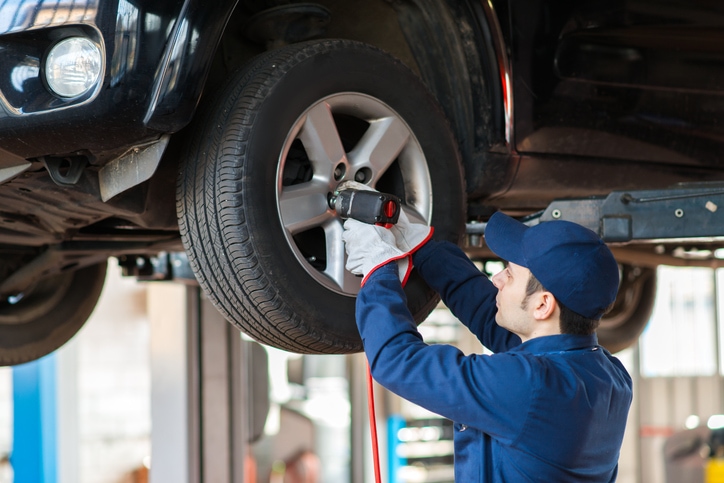All Categories
Featured
When your car requires repair services or substitutes, one of the most crucial choices you'll need to make is whether to use Original Tools Maker (OEM) components or aftermarket components. Both choices feature their own benefits and negative aspects, and selecting the right one can dramatically impact the performance, durability, and cost of your lorry repair work. Below's an overview to aid you make a notified decision in between OEM and aftermarket parts.
![]()
What Are OEM Parts? OEM parts are made by the same manufacturer that created the original parts in your lorry when it was built. These components are developed especially for your make and design, guaranteeing a perfect fit and matching the specifications of the initial elements. If you have a Ford lorry, an OEM component would certainly be made by Ford or an authorized Ford provider.
One of the major benefits of OEM parts is their assured top quality and compatibility. OEM components are more most likely to work well and last as lengthy as the original component due to the fact that they are developed to satisfy the maker's precise criteria. In most cases, they include guarantees that guarantee your contentment. Additionally, utilizing OEM components can help preserve the resale worth of your lorry given that potential customers usually choose automobiles that have actually been repaired with original parts.
What Are Aftermarket Components? Aftermarket components are produced by third-party manufacturers and are made to fit a variety of cars, not simply one details make or design. These parts are commonly much less expensive than OEM components because they are created in greater quantities, and the suppliers do not bear the very same advancement expenses as the original suppliers.
While aftermarket parts are created to be compatible with many automobiles, the high quality can differ depending on the brand and maker. Some aftermarket parts are premium and offer similar performance to OEM parts, while others might be made with less costly materials and may not execute too or last as long.
![]()
Advantages of OEM Components. Guaranteed High Quality and Fit: Because OEM parts are made by the car's producer, they're ensured to meet the precise specifications of the initial components. This makes sure a specific fit and ideal performance. Service warranty: OEM components frequently feature a maker's service warranty, providing assurance and defense against issues. Resale Value: Autos repaired with OEM parts are usually more eye-catching to buyers, which can assist preserve or even boost the resale worth of your car. Long life: OEM components are typically developed to last as long as the original components, indicating you may have less issues and replacements in the future. Benefits of Aftermarket Components. Reduced Cost: Aftermarket components are typically much more budget friendly than OEM parts, making them an attractive option for those wanting to save cash on repairs. Range: There is a larger variety of aftermarket components available, including upgraded or performance-enhancing choices that might not be readily available in OEM components. This is especially appealing to automobile lovers who desire to modify their automobile. Accessibility: Aftermarket components are commonly readily available and usually simpler to discover than OEM components, which can be particularly useful for older automobiles or hard-to-find elements. Development: Lots of aftermarket components are developed with enhancements or included attributes that enhance the car's efficiency or look, such as high-performance brake pads or exhaust systems. Downsides of OEM Components. Greater Price: OEM components are typically extra expensive than aftermarket options, which can be a considerable variable if you get on a spending plan. Minimal Alternatives: OEM components may supply fewer alternatives for personalization or performance upgrades compared to aftermarket components. Downsides of Aftermarket Components. Irregular High quality: Aftermarket components can vary widely in regards to quality. Some makers create components that do simply as well as OEM elements, while others may reduce corners to conserve costs. Fitment Issues: While aftermarket components are developed to fit most automobiles, they might not constantly be a precise suit for your vehicle, causing prospective compatibility concerns. Warranty Limitations: Aftermarket parts may not come with guarantees or might supply limited defense, which might lead to additional prices if the component falls short prematurely. Just how to Choose In Between OEM and Aftermarket Parts. When determining between OEM and aftermarket components, there are numerous factors to take into consideration:
Budget plan: If expense is a main problem, aftermarket components may be the better option because of their reduced price. However, if you can afford it and are concerned concerning long-lasting reliability, OEM parts could be worth the financial investment. Car Age and Problem: If you possess a newer lorry that's still under guarantee, using OEM components may be the most effective choice to keep the car's integrity and protect its resale worth. For older cars, aftermarket parts can be an affordable solution to maintain the auto running. Efficiency and Customization: If you're interested in improving your lorry's efficiency or appearance, aftermarket components use more range and options for upgrades. Producer Referrals: Some car manufacturers might suggest or need the use of OEM parts for certain repair services, particularly for safety-related parts like air bags or brake systems. Always consult your proprietor's guidebook or an expert auto mechanic for assistance. Conclusion. Inevitably, the decision in between OEM and aftermarket components depends on your details needs, preferences, and budget plan. While OEM parts provide an assured fit and better, aftermarket components can offer price savings and a broader variety of choices. By thoroughly considering factors like cost, car age, and desired efficiency, you can make the very best selection for your automobile fixings, ensuring that your vehicle stays in good functioning problem without breaking the financial institution.

What Are OEM Parts? OEM parts are made by the same manufacturer that created the original parts in your lorry when it was built. These components are developed especially for your make and design, guaranteeing a perfect fit and matching the specifications of the initial elements. If you have a Ford lorry, an OEM component would certainly be made by Ford or an authorized Ford provider.
One of the major benefits of OEM parts is their assured top quality and compatibility. OEM components are more most likely to work well and last as lengthy as the original component due to the fact that they are developed to satisfy the maker's precise criteria. In most cases, they include guarantees that guarantee your contentment. Additionally, utilizing OEM components can help preserve the resale worth of your lorry given that potential customers usually choose automobiles that have actually been repaired with original parts.
What Are Aftermarket Components? Aftermarket components are produced by third-party manufacturers and are made to fit a variety of cars, not simply one details make or design. These parts are commonly much less expensive than OEM components because they are created in greater quantities, and the suppliers do not bear the very same advancement expenses as the original suppliers.
While aftermarket parts are created to be compatible with many automobiles, the high quality can differ depending on the brand and maker. Some aftermarket parts are premium and offer similar performance to OEM parts, while others might be made with less costly materials and may not execute too or last as long.

Advantages of OEM Components. Guaranteed High Quality and Fit: Because OEM parts are made by the car's producer, they're ensured to meet the precise specifications of the initial components. This makes sure a specific fit and ideal performance. Service warranty: OEM components frequently feature a maker's service warranty, providing assurance and defense against issues. Resale Value: Autos repaired with OEM parts are usually more eye-catching to buyers, which can assist preserve or even boost the resale worth of your car. Long life: OEM components are typically developed to last as long as the original components, indicating you may have less issues and replacements in the future. Benefits of Aftermarket Components. Reduced Cost: Aftermarket components are typically much more budget friendly than OEM parts, making them an attractive option for those wanting to save cash on repairs. Range: There is a larger variety of aftermarket components available, including upgraded or performance-enhancing choices that might not be readily available in OEM components. This is especially appealing to automobile lovers who desire to modify their automobile. Accessibility: Aftermarket components are commonly readily available and usually simpler to discover than OEM components, which can be particularly useful for older automobiles or hard-to-find elements. Development: Lots of aftermarket components are developed with enhancements or included attributes that enhance the car's efficiency or look, such as high-performance brake pads or exhaust systems. Downsides of OEM Components. Greater Price: OEM components are typically extra expensive than aftermarket options, which can be a considerable variable if you get on a spending plan. Minimal Alternatives: OEM components may supply fewer alternatives for personalization or performance upgrades compared to aftermarket components. Downsides of Aftermarket Components. Irregular High quality: Aftermarket components can vary widely in regards to quality. Some makers create components that do simply as well as OEM elements, while others may reduce corners to conserve costs. Fitment Issues: While aftermarket components are developed to fit most automobiles, they might not constantly be a precise suit for your vehicle, causing prospective compatibility concerns. Warranty Limitations: Aftermarket parts may not come with guarantees or might supply limited defense, which might lead to additional prices if the component falls short prematurely. Just how to Choose In Between OEM and Aftermarket Parts. When determining between OEM and aftermarket components, there are numerous factors to take into consideration:
Budget plan: If expense is a main problem, aftermarket components may be the better option because of their reduced price. However, if you can afford it and are concerned concerning long-lasting reliability, OEM parts could be worth the financial investment. Car Age and Problem: If you possess a newer lorry that's still under guarantee, using OEM components may be the most effective choice to keep the car's integrity and protect its resale worth. For older cars, aftermarket parts can be an affordable solution to maintain the auto running. Efficiency and Customization: If you're interested in improving your lorry's efficiency or appearance, aftermarket components use more range and options for upgrades. Producer Referrals: Some car manufacturers might suggest or need the use of OEM parts for certain repair services, particularly for safety-related parts like air bags or brake systems. Always consult your proprietor's guidebook or an expert auto mechanic for assistance. Conclusion. Inevitably, the decision in between OEM and aftermarket components depends on your details needs, preferences, and budget plan. While OEM parts provide an assured fit and better, aftermarket components can offer price savings and a broader variety of choices. By thoroughly considering factors like cost, car age, and desired efficiency, you can make the very best selection for your automobile fixings, ensuring that your vehicle stays in good functioning problem without breaking the financial institution.
Latest Posts
Uncover Reduce Expenses on Car Maintenance with Montclare Auto Repair’s Limited-Time Deals
Published en
1 min read
Experience WyHy FCU – Low Rates for Members
Published en
1 min read
Discover WyHy Federal Credit Union – Member-Focused Services for Your Future
Published en
1 min read
More
Latest Posts
Uncover Reduce Expenses on Car Maintenance with Montclare Auto Repair’s Limited-Time Deals
Published May 25, 25
1 min read
Experience WyHy FCU – Low Rates for Members
Published May 25, 25
1 min read
Discover WyHy Federal Credit Union – Member-Focused Services for Your Future
Published May 24, 25
1 min read